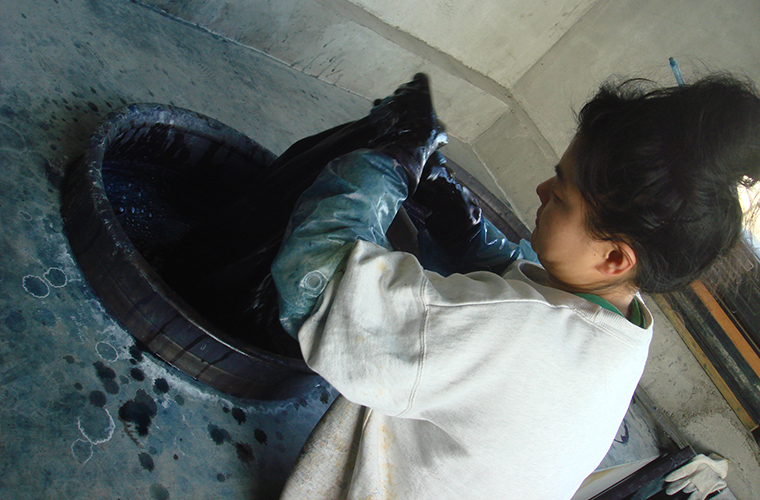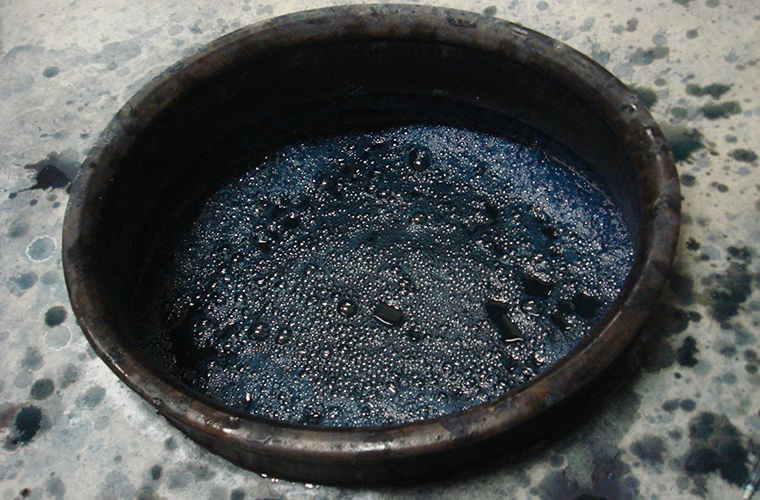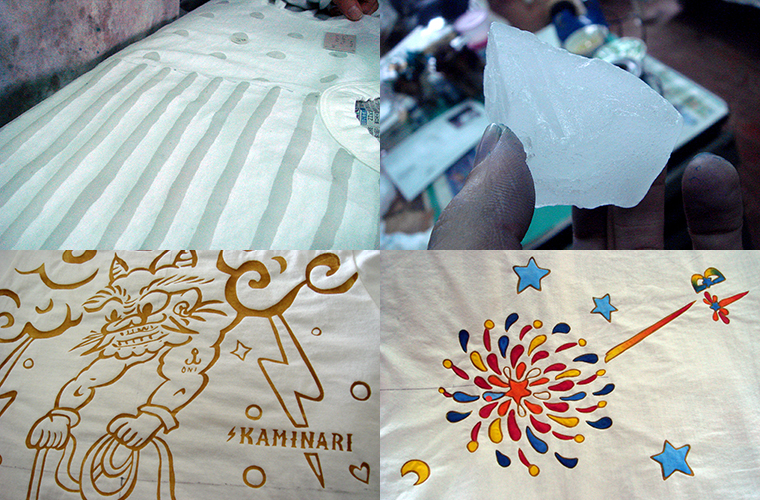Natural Dye

In a factory in Mizuma, Fukuoka, Japan, our natural-dyed garments are produced manually. This method gives unique quality of gentle color on fabrics and the garments gets well-faded texture as you wear them. Traditional method is applied to contemporary casual wears; this is one of our styles.

〈Natural Dye Colorant〉
Ai(Natural Indigo)
We use natural Indian indigo. Immerging fabric into a pot filled with the ai colorant.
Doro(Mud)
After botanical dye with Acacia catechu, immerging the fabric int the mud results in color of earthy brown. This is because of combination between iron in the soil and tannin in the plants. Our craftman uses soil from her own field of vegetables. As the mud dye color depends on ingredients of the ground, our brown is actually only brown.
Sumi(Japanese Ink)
We use Japanese ink consisted of soot and glue derived naturally from Kyoto, Japan. It provides unique charcoal black differnt from general black.
〈Natural Dye Techniques〉
Norioki(Stencil Dye)
Rice bran or rice cake flour is put on stencil pattern in order to resist-dye. After coloring, stencil againm immerge into colorant and wash the fabric; the resist-dyed image is revealedon it. The procedure results in beautiful bleeding of color.
Rouketsu(Batik)
Using a manual wax-resist dyeing technique. Dots and border are depicted manually with wax so each pattern has got unique quality. Thus this method gives handcraft quality different from stencil work.
Itajime(Fastening Plates)
Dyeing fabric by resist-dye with pressing it between plates. Specific gradation and bleeding of color.














